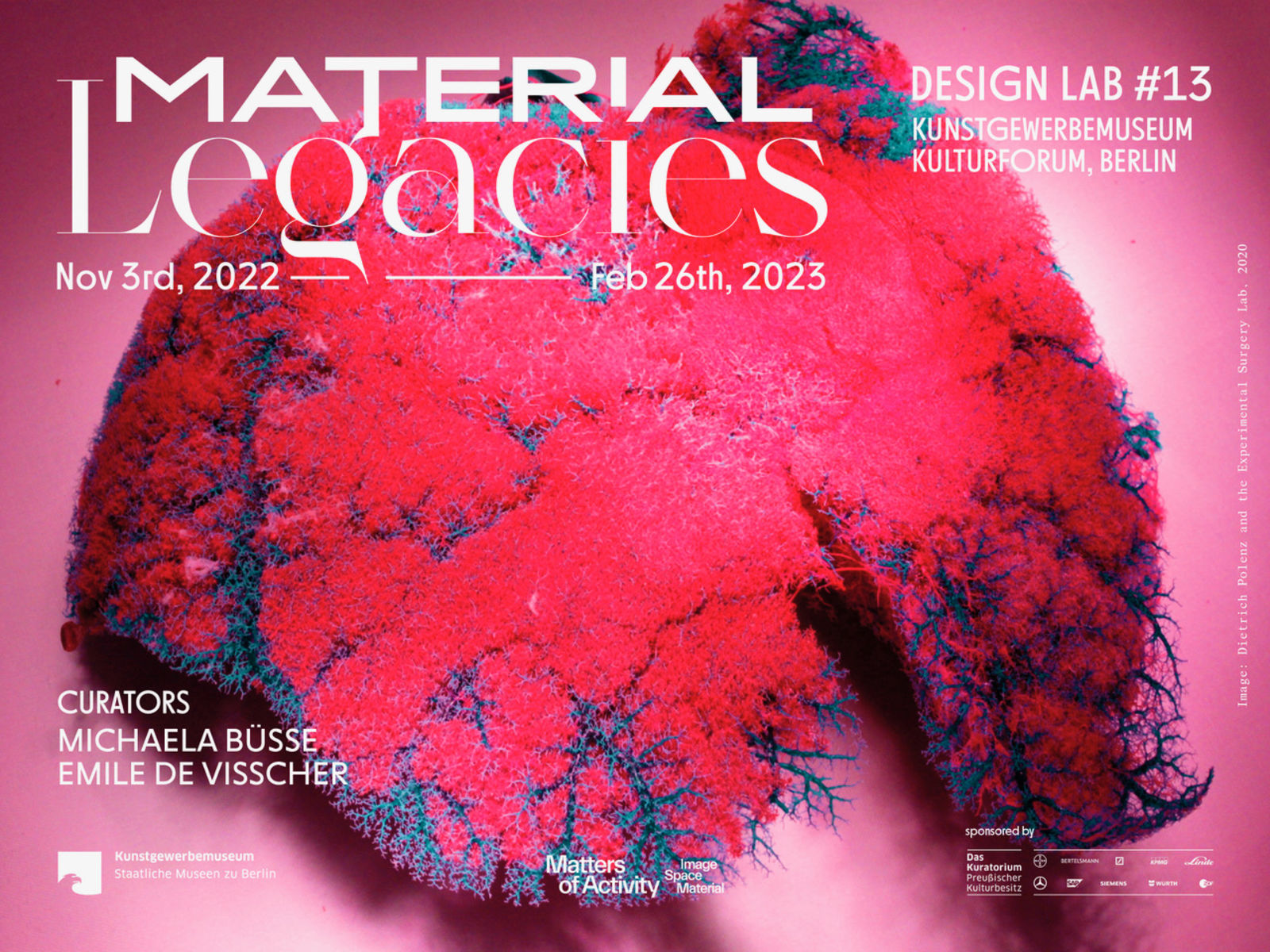Design Lab #13: Material Legacies
The exhibition »Design Lab #13: Material Legacies« at Kunstgewerbemuseum Berlin, opening on November 3rd, 2022, explores contingencies and ruptures between traditional crafts and the most recent developments at the crossroads of material research, design, engineering, and architecture. It brings together artifacts from the museum’s collection with work-in-progress installations by designers and researchers from the Cluster of Excellence »Matters of Activity. Image Space Material« in order to initiate a dialogue about the historical, contemporary, and future conditions under which materiality unfolds.
By engaging with a series of different materials and techniques the exhibition encompasses both the problematization of unsustainable pasts and presents as well as the imagination of speculative material futures. Taking materiality as a starting point, each of the exhibits will investigate its sociocultural, economic, and political context in order to disentangle the multiple interrelations that arise from and with materials. As such »Design Lab #13: Material Legacies« aims to challenge the passive understandings of materiality and associate with the widening discourse on relational knowledge practices in arts, design, humanities, and social science.
The exhibition will be running from 4 November 2022 to 26 February 2023. For the exhibition announcement on the website of the Staatliche Museen zu Berlin – Preußischer Kulturbesitz.
By engaging with a series of different materials and techniques the exhibition encompasses both the problematization of unsustainable pasts and presents as well as the imagination of speculative material futures. Taking materiality as a starting point, each of the exhibits will investigate its sociocultural, economic, and political context in order to disentangle the multiple interrelations that arise from and with materials. As such »Design Lab #13: Material Legacies« aims to challenge the passive understandings of materiality and associate with the widening discourse on relational knowledge practices in arts, design, humanities, and social science.
The exhibition will be running from 4 November 2022 to 26 February 2023. For the exhibition announcement on the website of the Staatliche Museen zu Berlin – Preußischer Kulturbesitz.

Exhibition Opening
3 November 2022, 6 pm
The opening event will include an introduction to the exhibition by Dr. Claudia Banz, Curator of Design at the Kunstgewerbemuseum Berlin, and Prof. Dr. Claudia Mareis, co-director of the Cluster of Excellence »Matters of Activity. Image Space Material«. Moreover, exhibition curators Michaela Büsse and Emile De Visscher will provide background on the exhibition, its goals, and how the curatorial process was undertaken.
The exhibition opening is part of the Berlin Science Week 2022.